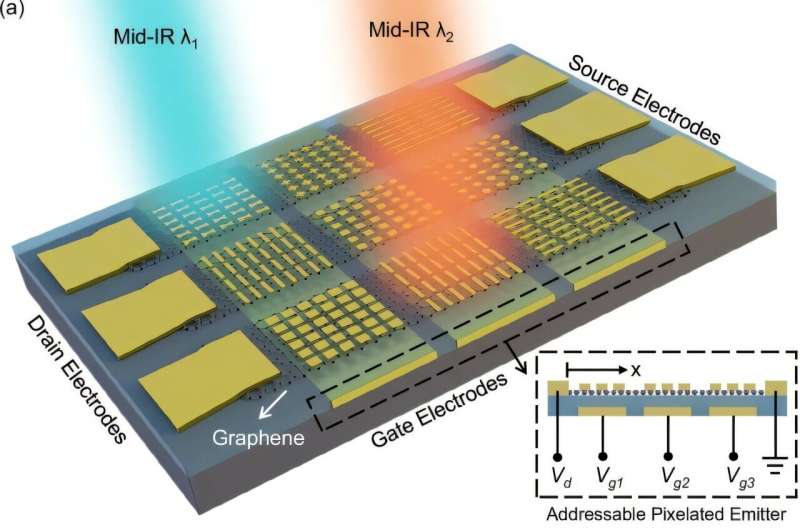Graphene Device Enhances Infrared Control for Autonomous Vehicles, AR, and Medical Technology.

Infrared technology plays a crucial role in autonomous navigation, augmented reality (AR), and medical imaging. However, the complex process of manufacturing programmable infrared devices has limited their widespread adoption—until now.
Researchers at Carnegie Mellon University’s College of Engineering have developed an active metasurface, the electrically programmable graphene field-effect transistor (Gr-FET), capable of dynamically controlling mid-infrared light. This breakthrough, achieved by the labs of Sheng Shen and Xu Zhang, unlocks new possibilities in fields ranging from infrared camouflage to personalized health monitoring.
The innovation lies in a two-dimensional structure consisting of gold pixel arrays interfacing with graphene layers, separated by an insulation layer. This unique design allows precise control of infrared properties across multiple wavelengths, directions, and polarizations.
One of its most promising applications is in cybersecurity. Side-channel attacks exploit subtle thermal emissions from computing devices to extract sensitive data, such as encryption keys. Shen’s device can camouflage these emissions, acting as an advanced security layer. This allows for scalable 2D electrical writing for densely packed, independently addressable pixels.
The Gr-FET could also revolutionize healthcare. By embedding it into garments, doctors could use the technology for early cancer detection by analyzing temperature variations in breast tissue. The team designed a specialized circuit enabling the device to function independently or integrate seamlessly into existing systems. They claim that they could see this technology integrated into real-world applications within the next five to ten years. From smarter AI-driven vehicles to enhanced cybersecurity and cutting-edge medical diagnostics, this graphene-based infrared controller is set to reshape multiple industries in the near future.“For the first time, our active metasurface devices exhibit the monolithic integration of rapidly modulated temperature, addressable pixelated imaging, and resonant infrared spectrum,” said Xiu Liu, postdoctoral associate in mechanical engineering and lead author of the study published in Nature Communications.








